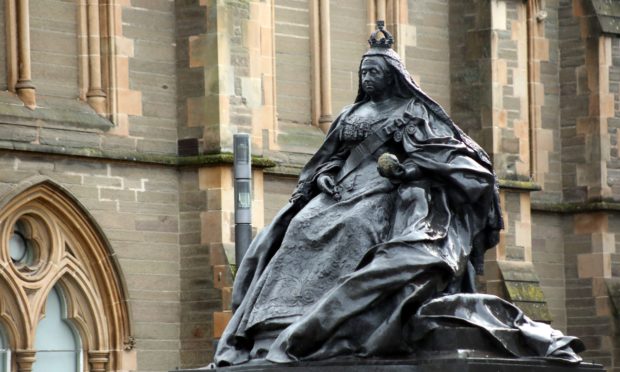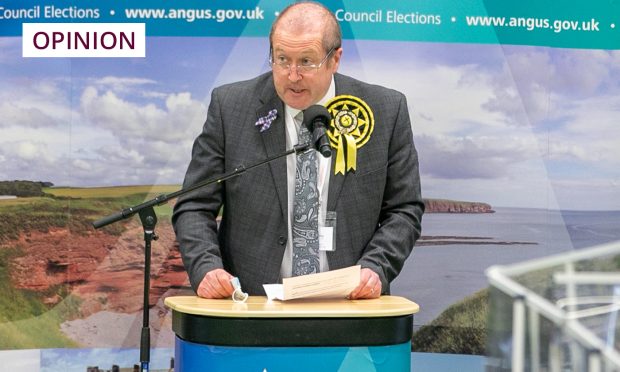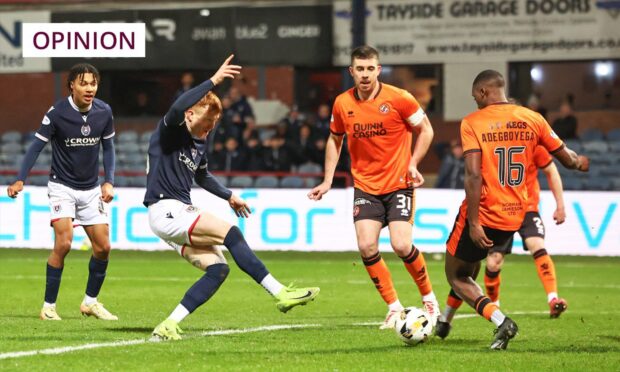Sir, – With the tearing down of the statue of Colston in Bristol, and Keir Starmer’s suggestion it should have happened many years ago, is it time to re-evaluate the statues Dundee council owns.
Such a statue has its merits but I have no doubt there will be those who resist it, a normal thing in a democracy.
This same difference of opinion exists about Queen Victoria’s statue in the Albert Square.
A sovereign who oversaw the British empire at its most racist height, who watched the great famines of India and Ireland with disdain, especially ironically when Albert’s statue was sent back from Dublin.
However in the post- emancipation time of her early years she took some interest in the apprentice law and in one or two Africans who had been slaves.
Is it not time for some historical transparency about our country’s horrendous past?
Should Dundee council not commission a descriptive plaque that explains Queen Victoria’s reign?
Mark Cashley.
Inchgarth House,
Forfar.
Learning from our history
Sir, – Street names, buildings and statues to our ancestors is our history, both good and bad.
Scotland has a long history of great achievements and more recently a past that needs to be faced up to rather than – and it is the unpalatable truth – being swept under the proverbial carpet of collective embarrassment and amnesia.
Rather than renaming streets and tearing down statues because they represent or are named after people who are now deemed reprehensible, I would suggest we should use modern technology like QR Codes to remind tourists or even residents of the history of a particular street or object. It may have additional, benefit for schoolchildren and tourists can do walking tours also.
This would be similar to the Discovery Walk in and around Slessor Gardens, and I can see it could enhance walking tours around the city.
Sponsorship of the QR Codes, by other local attractions like cafés and bars would be a possible option as it could increase their footfall.
Who would write the content of the QR Codes?
One suggestion would be for Dundee University Faculty of Humanities (History) to create a First Year Prize for best QR Code History Research or Abertay for best QR Animation/Video Graphic.
Alistair Ballantyne.
Birkhill, Angus.
Protest, but only when it is safe
Sir, – I have been watching in disbelief that so many people are out protesting all around the country ignoring advice and putting us all at more risk from Covid-19.
I agree more needs to be done to sort out poverty, bad housing, low pay education and so on.
But all lives matter and if we don’t get on top of this virus and get everything back on track then things will get worse for everyone.
Think of your family your friends and neighbours and leave the protesting until it’s safe to do so .
Elizabeth Kintrea.
Coaltown of Balgonie,
Fife.
Fostering real societal change
Sir, – The working class of Britain, and the world, face three major crises; the Covid-19 health crisis, a post Covid-19 and worst-since-1706 cyclical capitalist economic and industrial crisis, and a fundamental, life-changing climate and environmental crisis.
The performance of national governments has left billions terrified around the planet and, with the possible exception of China, at a loss to identify the leadership and policy platforms to lead us safely out of this nightmare to a more civilised, equitable, rational and sustainable existence.
Neither a Scottish nationalist government, a Tory British government, a dumb-struck European Union nor a Western-dominated United Nations Security Council – all of which are under the thrall of big money, big business, big oil, big pharma, big weapons and bigger idiots – have the power, resolve, influence or popular trust to strike out on the obvious path demanded by billions.
That is the path of real political, economic and industrial democracy, common ownership of the means of production, distribution and exchange, public funding and control of all health and social services, respect for effective trade union and labour movement rights to free collective bargaining, free assembly, recognition and organisation.
Raymond Mennie,
49 Ashbank Road,
Dundee.
Campuses not in communities
Sir, – Donald Gordon from Dundee Civic Trust (Use brownfield sites to end the urban sprawl, Courier, June 8) is quite correct in asking us to use the lessons of lockdown to encourage houses to be built nearer existing facilities.
Towns and cities throughout Scotland are subject to unprecedented urban sprawl at the very same time that local and national governments are boasting about their green credentials.
While existing brownfield sites are often ignored, councils are actually creating new brownfield sites.
Community-based leisure facilities and schools are often now built on the periphery of towns leaving either vacant lots or buildings that are difficult to redevelop.
Community asset transfer initiatives often are proving difficult or impossible for local trusts or volunteer groups. Ironically, the new “community campuses” are often not actually in the community.
They are some distance from the groups’ traditionally low users of these facilities and they are not served by regular public transport.
This adds to car use and additional air pollution.
Is it time for a rethink of these big is beautiful, multi-use marginal facilities that undo the good work done by other council initiatives?
Ron J Scrimgeour.
39 Gowan Rigg,
Forfar.
Stick to the food writing, please
Sir, – I usually look forward to Murray Chalmers’ articles in Courier Weekend on food and dining but the article on Saturday was bang out of order .
Murray Chalmers is a features writer not a political journalist so why let his anti-UK Government rant dominate his weekly article?
Many people would sympathise with aspects of his criticisms but his obvious frustration due to lockdown is not an excuse for his being permitted to use his normally entertaining articles space as a platform for venting his personal views in such a slanted and bilious manner.
Andrew Duncan.
Kirkton of Largo, Fife.
Write on, Murray, write on
Sir, – I was surprised to see the letter attacking Murray Chalmers’ writing in The Courier’s Saturday food magazine, The Menu.
When one’s specialist subject – in this case, restaurant reviews – is not available, one can either put one’s head in one’s hands and cry woe is me, or write an entertaining article on some other subject.
On that basis Mr Chalmers regularly ticks the box, for which I thank him.
Gordon Cook.
Gowanlea,
Friockheim.










